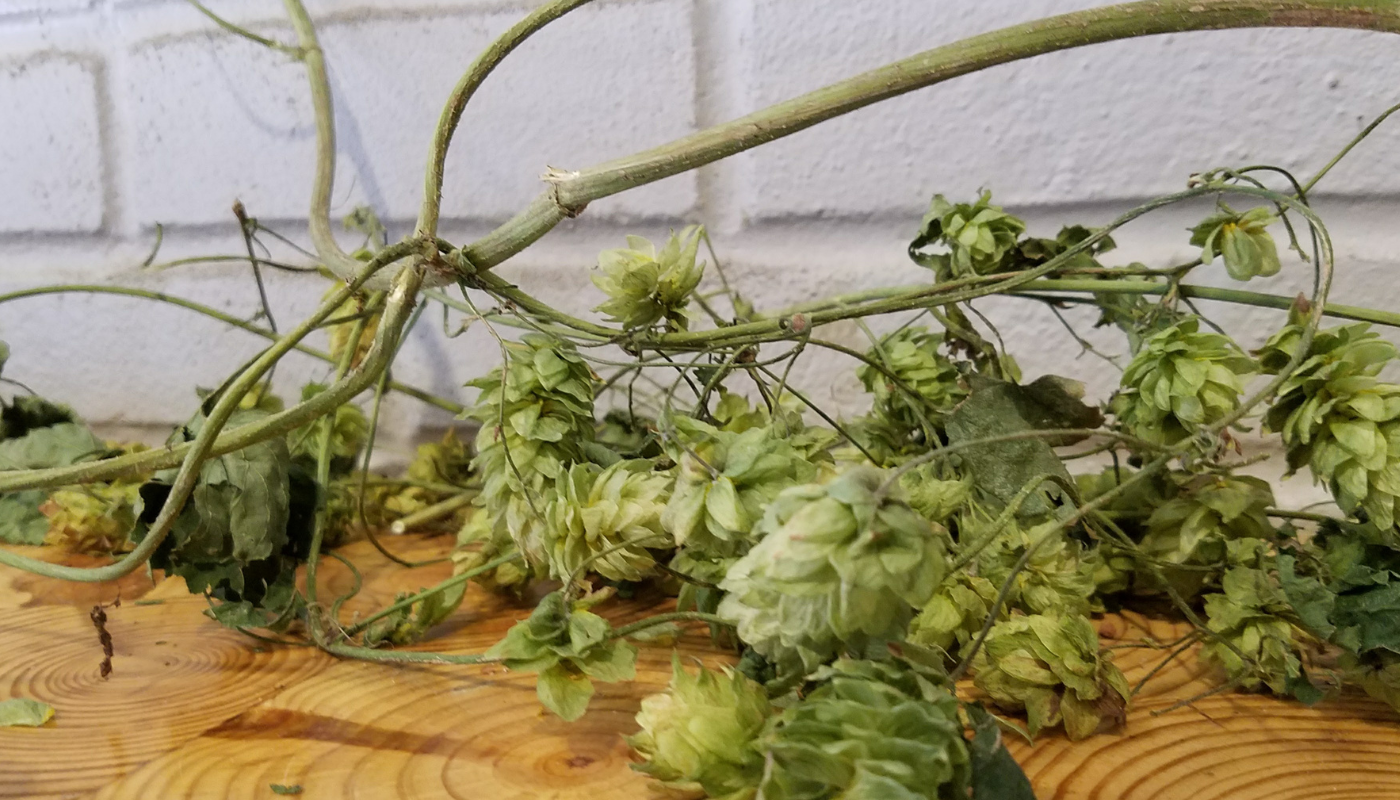Climate change has long been on the minds of folks in and around the beer industry. Whether relating to water use, recapturing carbon dioxide, managing spent grains, or even dealing with the fallout from storms, floods, and fires, the beer industry has soberly viewed weather related issues as challenges to be addressed. Access to quality raw ingredients is just another in a long line of climate based concerns.

Beverage Ingredients featured expert topic supported by WEIMA America, Inc.
Welcome to the World of Shredding & Compressing! New drainage and compression technology for the beverage industry! As the world innovates, so do we.
The severity of climate related impacts on the beer industry came into greater focus with the recent release of a report in the journal Nature Communications that showed climate change was responsible for a negative impact on the quantity and quality of European grown hops. The news also suggested hop growers around the globe would likely see challenges ahead as well.
The report focused on Europe and forecasted impacts on the region’s hop farms, noting that increasing temperatures leading to warmer, drier summers have negatively affected the size and quality of hop harvests. The authors noted that in the main European hop regions, including Germany, Czech Republic, and Slovenia, there was a significant decrease in hop production and quality from 1995 to 2018 as compared to 1971 to 1994. Hop yields and alpha acid content of the harvests significantly declined and rising temperatures further shifted the onset of the hop growing season by two weeks to more than a month.
The authors next simulated the effect of weather conditions on hop yield and alpha content with the addition expected changes in air temperature and precipitation amounts. Projecting out from 2021 to 2050, the report predicted a decline in hop yields of 4.1 to 18.4 percent compared to 1989 to 2018. It further predicted a decrease of 20 to 30.8 percent in alpha acid content. The authors point to rising temperatures and more frequent and severe droughts as the reason for these significant decreases.
The beer industry has witnessed several bad seasons for hop production, whether due to the presence of pests, mildew, drought, or heat. In the United States, the overwhelming bulk of hop production centers on three states: Idaho, Oregon, and most importantly, Washington State, which comprises 74 percent of the US hop crop for 2023 according to the United States Department of Agriculture. In 2023, production for these three regions totaled 104 million pounds, up two percent from the 2022 crop of 102 million pounds. This was despite the combined area harvested the the three regions totaling only 54,318 acres, down 10 percent from 2022.
All it takes is one bad season or one rough year of pests and pestilence to put the hop crop in bad shape. When bad weather hit Europe in 2007, leading to a decrease in hop production, hop prices rose 20 percent. Substantial drought in 2015 led to substantial crop loss, dragging German production down 26 percent. In a report on climate, weather, and their impact on hops, the USDA noted that “[s]hifting climate patterns have important implications for the established commercial hop production of the Pacific Northwest and new hop production areas.”
Citing a 1.3 degree Fahrenheit increase in average US temperatures since 1895, with the bulk coming since 1970, these regions are increasingly challenged. Warming in the Pacific Northwest has led to impacts on the timing and amount of water availability. The USDA predicts that “[b]y 2050, these changes in temperature and water availability are projected to present even more challenges to agriculture, with snowmelt expected to shift to three to four weeks earlier than the last century’s average, and summer stream flows projected to be substantially lower.”
The USDA notes that increased climate risk creates added complexity uncertainty in hop production, including how to manage pests and pathogens. Powdery mildew, for example, thrives in dry conditions, which are expected to increase. The USDA regularly conducts surveys of farmers, including of hops, and noted that the unknown risks emerging related to climate change are causing uncertainty among growers about long-standing practices such as when to plant, pruning, and training.
In the United States, hop growers and distributors are keenly aware of the climate change related issues facing them and are taking steps to address them. Hop farmers are relocating their hop plants to higher elevations and into valley locations with higher water tables, they’re installing new irrigation systems to ensure proper water supply and changing the orientation and spacing of crop rows. At universities and labs, hop scientists are breeding varieties they hope will be more resistant to changes in climate. Hops such as Elani and Akoya among others have been bred specifically with their ability to thrive under current and anticipated future weather conditions.
Hop distributors are also warning customers that changes in climate in hop growing regions, especially those in Europe, are causing hops to fall below traditional analytical ranges. In a sustainability report, former HAAS CEO Alexander Baas told customers that “we recognize that climate change is already impacting the hop industry and will continue to affect the quality and predictability of our products well into the future,” he wrote. “It is imperative that we take meaningful steps to continue to reduce our impact on the environment and to improve practices across our organization, and our global footprint, to ensure the long-term health and wellbeing of our company, our communities and our world.”
Hop distributors recommend that brewers always carry out sensory analysis when determining whether their selected hops conform to a desired flavor or aroma. They also recommend using enriched hop pellets, which involve a standardized aroma expression or alpha content, reducing variability and helping to manage crop fluctuations. At HAAS, the company offers its Hops Academy, in which they teach brewers and beer professionals the knowledge and training necessary to improve their evaluation of new harvests of hops and to improve process efficiencies and reduce waste. They also recommend brewers consider hop blending, especially when a beer’s aroma is substantial, where hop varieties are combined to achieve a desired aroma profile.

